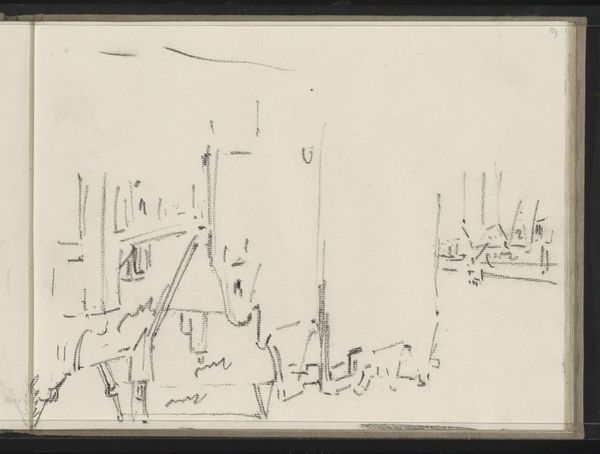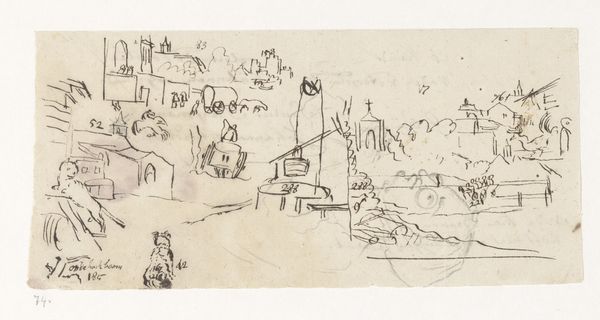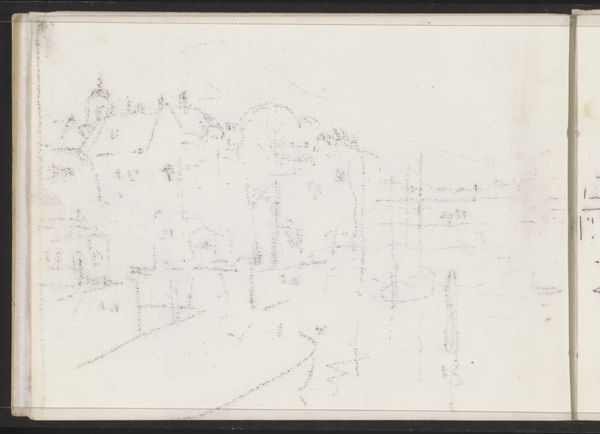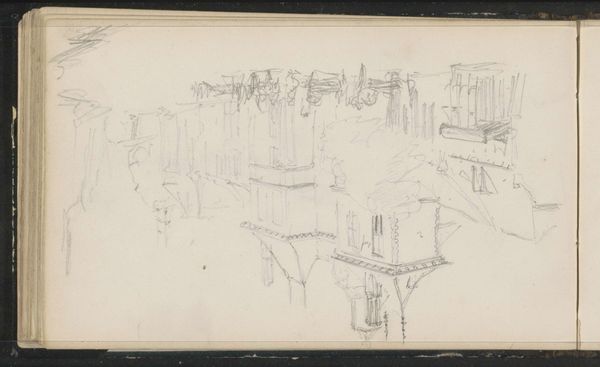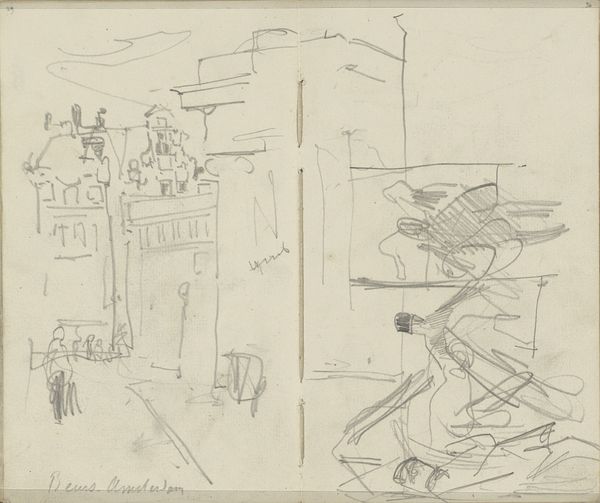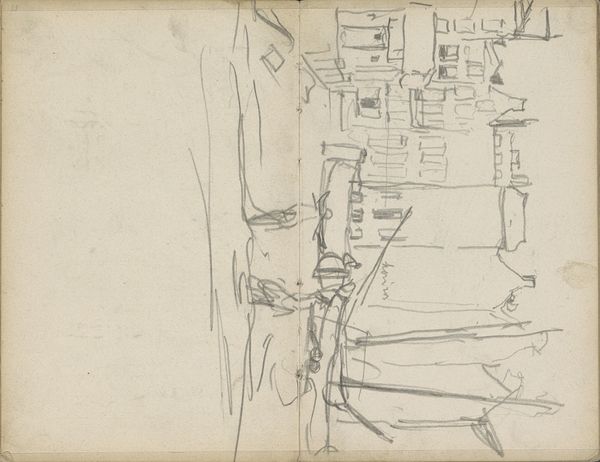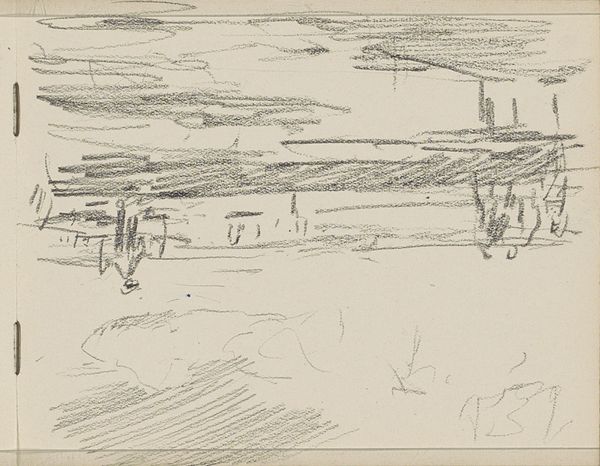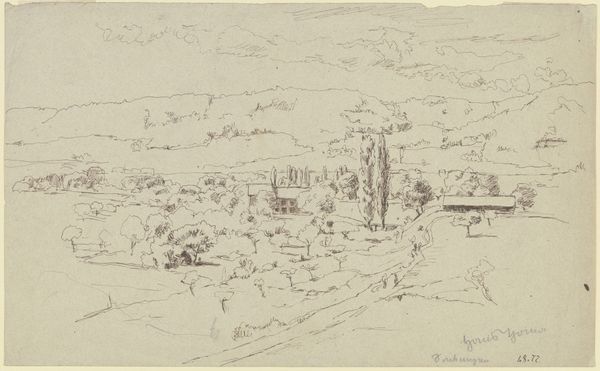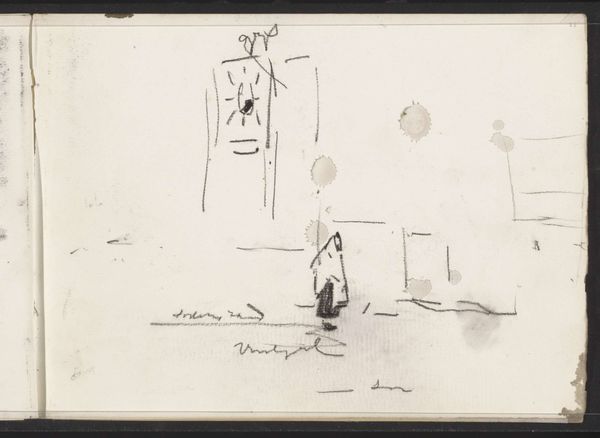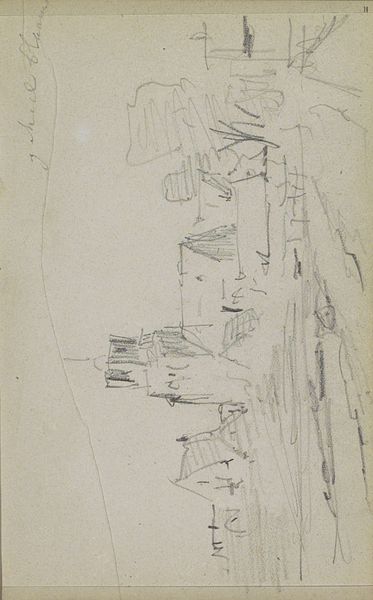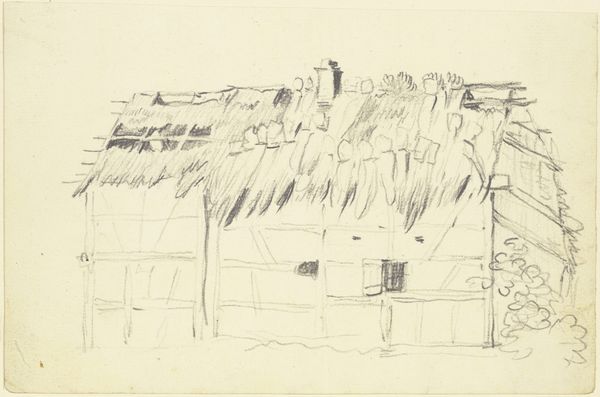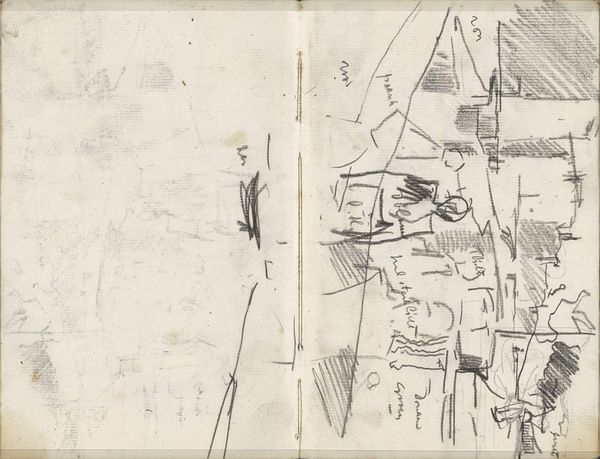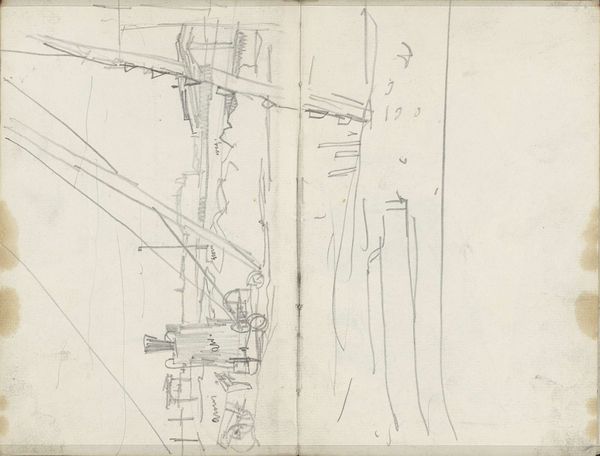
Copyright: Rijks Museum: Open Domain
Curator: We are looking at "Gezicht op de Leuvehaven te Rotterdam" by Willem Witsen, made around 1896-1897. It's currently held at the Rijksmuseum. The artist employed ink and pencil in this drawing. Editor: My initial impression is one of quiet industry. Despite the sketch-like quality, there's a distinct atmosphere of work and a muted hustle embedded within the port scene. Curator: It’s tempting to place Witsen within a tradition of Dutch maritime painting, celebrating mercantile power, but that would overlook the artist's subtle commentary on labor, class and urban development. The period corresponds with massive expansions of port facilities to accommodate international trading; whose experiences were centered? Editor: Absolutely, the visual language is rich with symbolic potential. The ships themselves represent voyages and connections, and even a longing for elsewhere; the details that catch my eye are the reflections in the water and the repetition of the masts, almost as a symbol of shared hope and perhaps shared dreams. The lines become metaphors, not just representation. Curator: Exactly! The docks stand in for industrialisation and colonial narratives and the built environment encroaches on the waterways; also this isn't just about individual hopes, but a shared vision, likely not shared equitably. Editor: Thinking more about the ships, these masts pierce the sky, and stand like cultural markers. Do they signal connection to others, or aspiration, or could this be read as imposition and colonial endeavor? These emblems resonate profoundly. Curator: That duality resonates deeply, even at this scale. We need to consider the ethics of this progress. For me, this artwork serves as an opportunity for reflection on power structures. Editor: I agree. It’s the nature of symbolic imagery—it isn't static. These simple forms represent a layered moment. Thanks for guiding me through the sociopolitical landscape, giving extra weight to an emotional response. Curator: Thank you. Recognizing historical weight within art is critical if we hope to affect real social transformation.
Comments
No comments
Be the first to comment and join the conversation on the ultimate creative platform.
